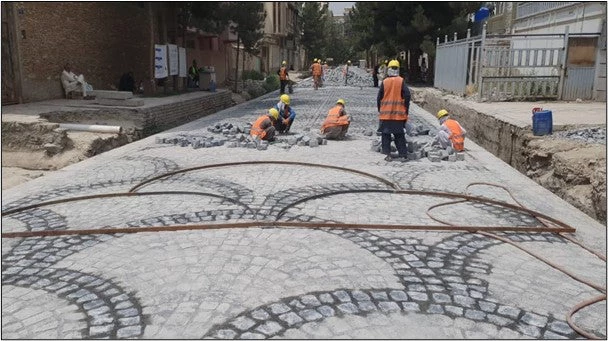 Please credit: UNOPS Community Resilience and Livelihoods Project Team
Please credit: UNOPS Community Resilience and Livelihoods Project Team
In countries challenged by fragility, conflict, and violence (FCV), the private sector is key to accelerating economic growth, as it can play an instrumental role in providing jobs and income to vulnerable populations. However, due to their uncertain and unstable environments, many FCV- affected countries struggle to attract and sustain private sector investment.
This is where multilateral organizations, such as the World Bank, can step in to help alleviate some of the risks facing the private sector and thereby support economic growth and job creation. For this purpose, the World Bank FCV Strategy 2020-2025 emphasizes the Bank’s role in the enabling environment for private sector-led growth, supporting local private sector actors, enhancing conflict-sensitive approaches to investments, and helping catalyze and de-risk investments in FCV settings.
The Bank took this approach to support the revival of the local private sector in Afghanistan’s construction sector through the Community Resilience and Livelihoods Project. The hard-won progress over the past two decades in building private sector construction capacity was threatened to be undone following the takeover by the Taliban in August 2021 and international sanctions.

The project is financed by a $265 million grant from the Afghanistan Resilience Trust Fund (ARTF), which is administered by the World Bank, and is being implemented off-budget through the United Nations Office for Project Services (UNOPS) and outside of the interim Taliban administration’s control.
A key challenge the Bank faced was how to merge the objective of emergency support to the vulnerable population with that of preserving private sector capacity in the construction sector , which is critical for the economy and reconstruction in conflict- affected regions.
The project was conceived to provide short-term livelihood opportunities and deliver urgent essential services in rural and urban areas. In urban areas, project design focused on supporting local contractors by engaging them in small private community works through a competitive bidding process, thus driving down costs through open competition and helping to create a market for local civil works.
Since this project began in May 2022, it has yielded impressive results. To date, 135 local contractors have won 265 contracts through local competitive bidding. Around 300 contractors have been trained on how to use the UNOPS online bidding process, enabling them to continue participating in the wider UN procurement system, which is used by UN for its procurements across Afghanistan.

It is estimated that at least 2,200 highly skilled market-driven jobs have been created. These include jobs like project managers, engineers, and social mobilizers. In a survey of the contractors engaged in the project, 78 percent said they would retain these jobs after the completion of their contract. These jobs were created through the market that the project helped to develop, which has in turn enabled the contractors to regain and sustain capacity for works beyond the project. Around, 48,000 unskilled and semi-skilled short-term jobs have been created in the cities, and 10 percent of these jobs have gone to women.
The projects have been designed to promote the use of local materials, for example stone paving for streets that encourages local sourcing. In this way, the project has also supported additional sectors of the local supply chain, helping to catalyze the private sector.
This approach in Afghanistan shows that the private sector can be effectively engaged in FCV contexts to promote employment and sustain their capacity while also achieving the goals of providing essential services to the vulnerable populations. This enables the Bank to help preserve development gains that can then be built on in the future when there is more stability.



Join the Conversation